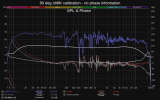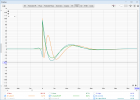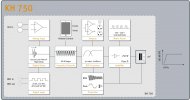ernestcarl
Major Contributor
Are you talking about this part?
View attachment 314151
If not, I want to ask if anyone knows why the line is not straight? I've never noticed this before on an unmodified graph. Usually, before the impulse begins, this line is strictly straight.
I've have made multi-point measurement, but I don't know if it suitable or not. Anyway I'll try to use it.
Yes. Likely when you introduced the subwoofer... I thought your speakers simply extended that low.
It's not a big deal.
If you average the multi-point measurements you should get less comb filtering. You should pay more attention to the RMS averaged response (no phase) when equalizing the magnitude response. And you can use the vector average while correcting the phase... but if the measurement distances are far apart, I would weigh the correction more heavily on the center MLP -- differences are not huge with your set of measurements, though.
*BTW, there's also RMS+phase avg which you can use. However, I notice that it produces some unwanted noise as well, so I might not use its phase information when performing trace arithmetic (extracted excess phase) and instead rely on the vector average.
Last edited:




